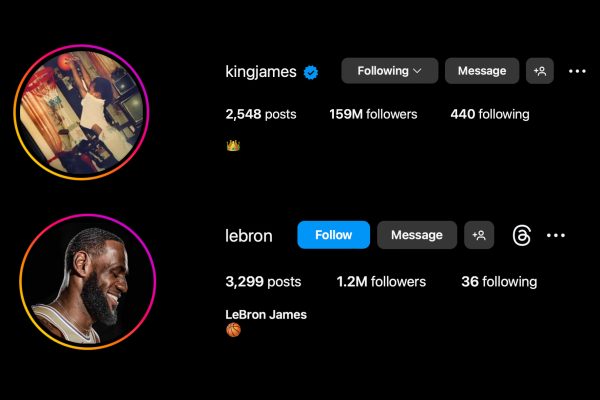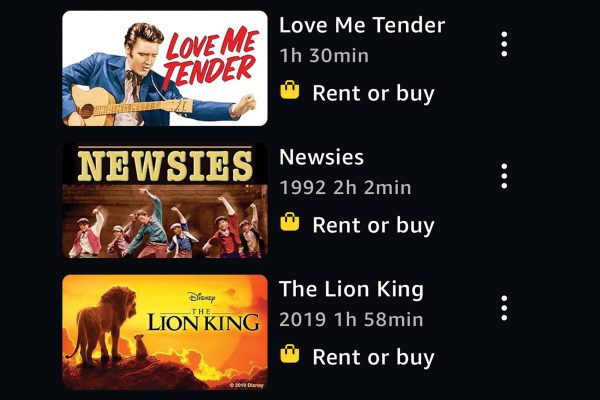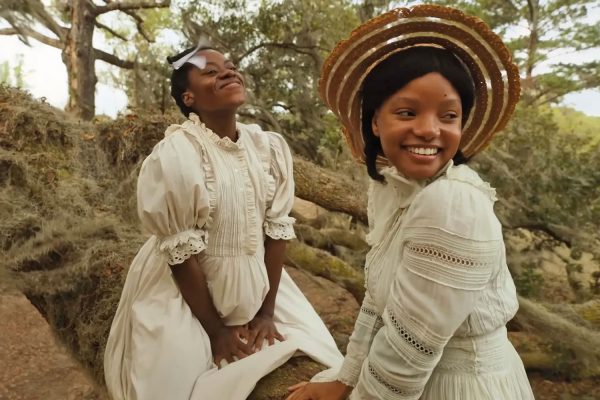Fouke monster madness
Introduction to the Fouke Monster and its effect on the town
Lyle Blackburn poses in his “Beast of Boggy Creek” hoodie. Blackburn has written two books about the Fouke Monster as well as other legends across the country.
May 28, 2020
It seems that every town has its own localized legend, but not many towns can say their legend is a monster. Fouke is a small rural town in Southwest Arkansas with a tall tale that has reached across the country and even the world. Though it hasn’t changed its identity much, over the years Fouke has come to embrace the legend into its culture.
With its story being known around the world, it was inevitable that someone would come to Fouke and try to capture the monster in a piece of media for the world to see. It has been visited by many and captivated audiences abroad. Lyle Blackburn wrote a book over the legend in 2012 and has since written many books covering multiple legends.
“Originally, I saw the “Legend of Boggy Creek” movie when I was a kid in the ‘70s, and I was already interested in Bigfoot, Yeti, Loch Ness Monster and all those sort of things that I had read about,” Blackburn said. “I grew up in Fort Worth, Texas, so it wasn’t until I saw the “Legend of Boggy Creek” that I thought something like that might be in our own area.”
Blackburn has written two books about the monster. While writing the books, he became acquainted with Fouke and its community. Blackburn is considered a reputable source when it comes to the legend due to his extensive research and interviews.
Blackburn’s stance as an outsider looking in on the town has given him an interesting perspective on the legend of the monster. He describes what many outsiders likely feel upon hearing the story. To many who know the story but don’t live there, their first perception of it comes through what they hear about the monster or see on the big screen, giving it a mythical appearance.
“I probably romanticize the whole thing more, because, when I first saw it, Fouke was a mystical place: a place that it was a real place, but it was something shown on a movie screen,” Blackburn said. “That’s what captured people’s imaginations. It was painted in such a cool picture as this is a mysterious place, and [it told people to] beware when the sun goes down. To outsiders, it’s something larger than life.”
The creature is recognized by many. It is especially known by those who have a fascination with Bigfoot or other mythical or paranormal creatures.
I travel all over the country speaking at Bigfoot conferences, paranormal events and other places… and everybody comes up to me [and asks] ‘what’s it like on Boggy Creek [or] what’s Fouke like?’ — Lyle Blackburn
“They have that sort of outsider view of maybe the woods here are just a little bit different, they’re just a little bit more creepy or there’s something about this place,” Blackburn said.
All this attention was brought on by “The Legend of Boggy Creek,” the movie about the creature that was released in 1972. It was directed and produced by Charles B. Pierce to have a documentary style. Pierce also directed and produced “The Town that Dreaded Sundown” (1976) and also helped write “Sudden Impact,” a Clint Eastwood film. “The Legend of Boggy Creek” gave the town a whole new level of fame which, since it began, has been a train that can’t be derailed.
“It’s so famous you wouldn’t even imagine that it could have happened, but it was just the right timing and the right circumstances that the movie did so well in the ‘70s that it got everywhere,” Blackburn said. “That made this little town famous, and for that it’s got to fame that other little towns can’t compete with. [It’s] this monster legend that never ceases. It kind of ebbs and flows, but it’s always getting bigger and bigger and some more stories and the movies being remade or there’s documentaries about it. So, it’s never ending.”
The film used many locals in its production, often having them play themselves as they recount their personal experience of the monster. There had been many sightings over the years, and then one was put into the local newspaper, garnering the town lots of attention. But the movie, which made over $20 million at the box office, is what brought the masses to the rural town.
“Originally when the story started being printed in the Texarkana Gazette in 1971, it was bringing outside interest and people were coming down here that wouldn’t normally come here,” Blackburn said. “It initially brought people in, and then, when the movie got big, it brought an even bigger wave of people down here.”
At the time, the movie’s influence could be easily seen through the sudden invasion of tourists hoping to see something extraordinary. However, this influx of people was often a negative thing.
“Small towns don’t like a lot of people tromping around and coming in. On one hand it’s great, because they’re stopping at your gas station and your convenience store and your two or three restaurants or whatever you have. That’s really cool,” Blackburn said. “But, it is kind of an invasion because these people are used to being out here a little bit away from the hubbub and stuff.”
Along with the tourists came anything from simple admiration of Fouke to outrageous attempts to see the monster such as setting up tents on private property near Boggy Creek. The town realized their situation wasn’t going away anytime soon and the reactions were mixed.
“Some of them found humor in that and some of them were mad. This is an invasion of privacy, and so they had a split reaction to the movie,” Blackburn said. “Then, some people maybe profited [with the mindset of] ‘well, let me sell some T-shirts, what the heck people are here anyway.’”
Over time, the hype slowed down to an acceptable level for the town, and town residents slowly began to accept it as part of their history. Many locals view the story in a positive light, and some even use it to make some profit. It seems as though most of the negativity surrounding the story has been left in the past.
“The people that wanted to do something [with the story] and make something out of it have [done that], and the people that just kind of let it be, then they let it be. But, you don’t have so much of the problem with people clamoring down here, running over fences and invading properties. That’s all in the past and that generation is gone,” Blackburn said. “The generation now just has fond memories. They’re proud of it. So, they have a much more positive view of it.”
The legend of Boggy Creek has certainly changed the community forever. There aren’t many grand displays of the influence it’s had, but the influence is seen in smaller ways: its appearance in day to day life, events held in Fouke and the retelling of the story over the generations.
“It didn’t revolutionize the town in [the sense] that there’s no amusement park or anything, there’s no water slides and there’s no motels and things that really exploit it. There’s really a few things, [for example] the Monster Mart, which has really embraced it; it has a souvenir shop and a small museum,” Blackburn said. “So, it’s changed in terms of if you’re going to come here [they have] stuff to show you if you’re interested. You can also see things about the monster in that, at one time, Highway 71 was called Monster Expressway, and there’s establishments like the Monster Activity Center.”
There have been many festivals and different events held in the creature’s honor over the years. The newest addition to the list of yearly events was the Fouke Monster Festival back in June of 2019. A second annual festival is planned for August 1. Prior to that was the Boggy Creek Festival which lasted three years. The most recent event was a campout in February in which Fouke Monster enthusiasts stayed at Smith Park and traded stories about the monster or similar experiences.
These events have brought more than just publicity, though. Some of the funds raised at the campout were donated to the Smith Park. Money raised at other events has gone to the local school or to scholarships.
However, it’s easy to get caught up in the story of the monster and forget about the town that houses it. In many cases, the Fouke Monster overshadows Fouke itself when outsiders view it. Even though they are proud of the legend, to the community, it’s just another day in a small southern town.
Whereas Fouke, just like any place, is just an ordinary small town with people [who] have the same troubles and challenges and problems and the same kind of family get togethers and celebrations as anybody else does in the world. — Lyle Blackburn
“The movie shows a small portion of what goes on in Fouke, so [an outsider’s] view of it is sort of magnified to the monster story and it’s all about that,” Blackburn said.
Although Fouke is a normal rural community in many regards, their town was forever changed once the legend reached the ears of the outside world. Some have incorporated the story into their life or their business while others have just simply learned to live beside it without directly changing too much. The change wasn’t drastic, but it cannot be undone.
“In some terms, it’s just another ubiquitous small town in the south that just happens to be either blessed or cursed with this association with this huge legend,” Blackburn said. “You couldn’t even have predicted how this spread worldwide.”





















